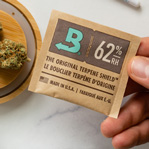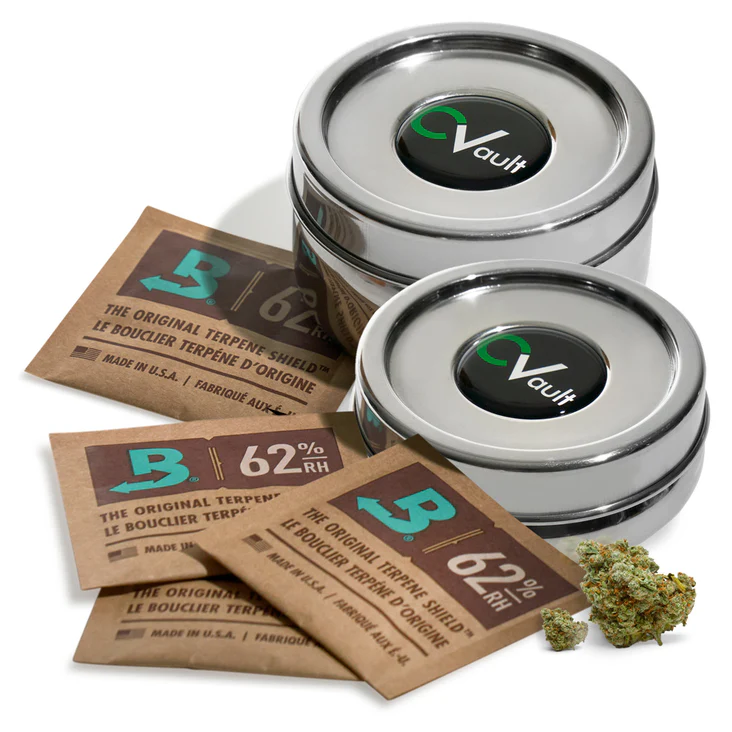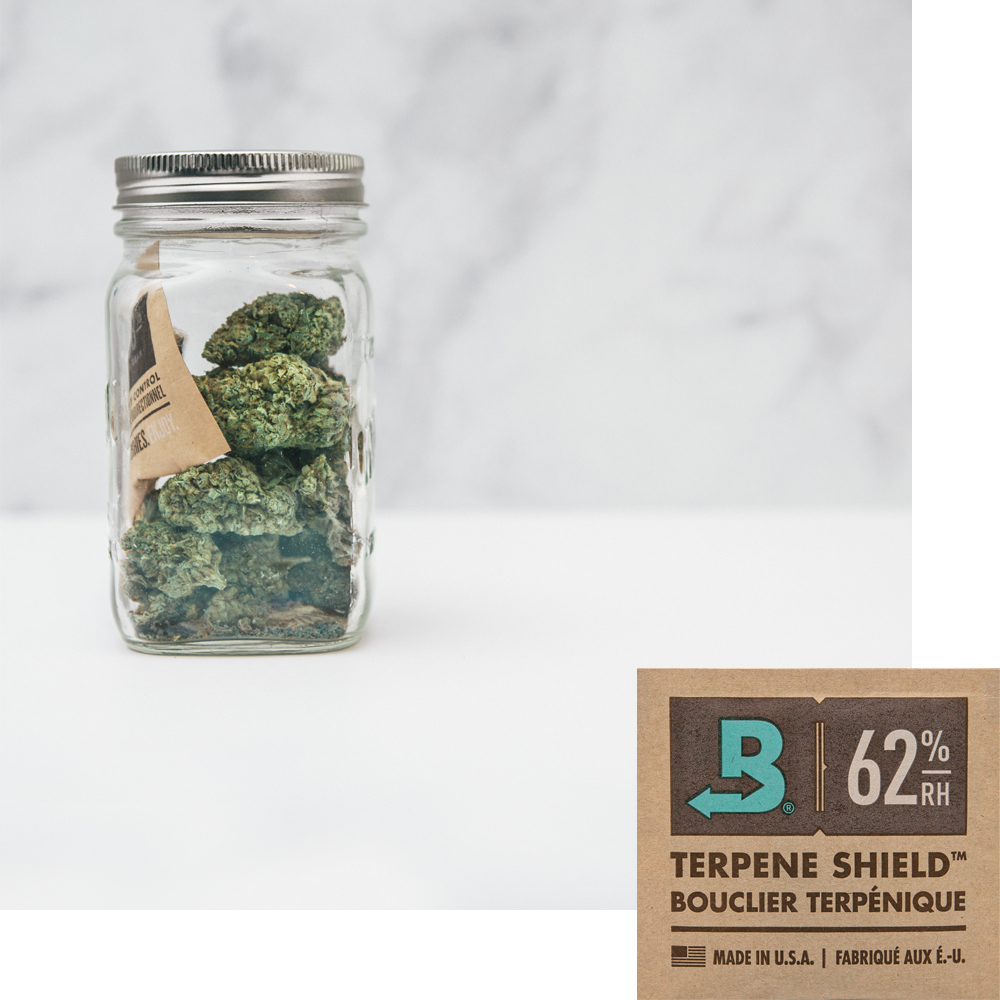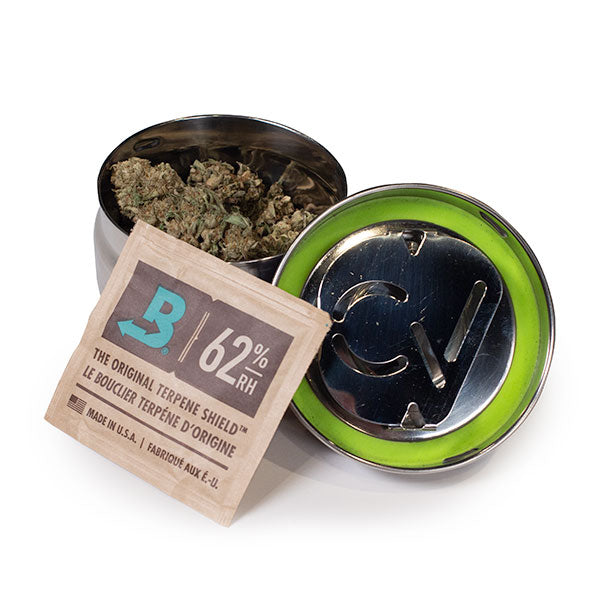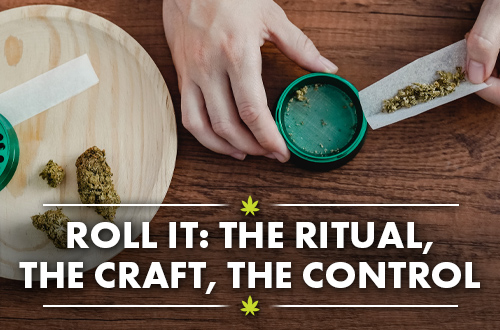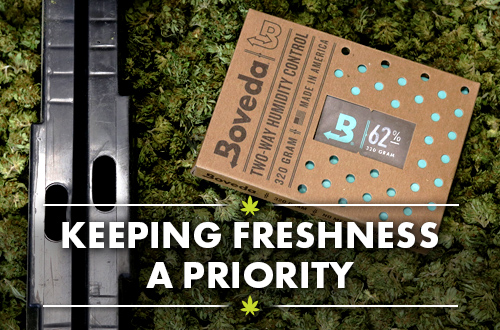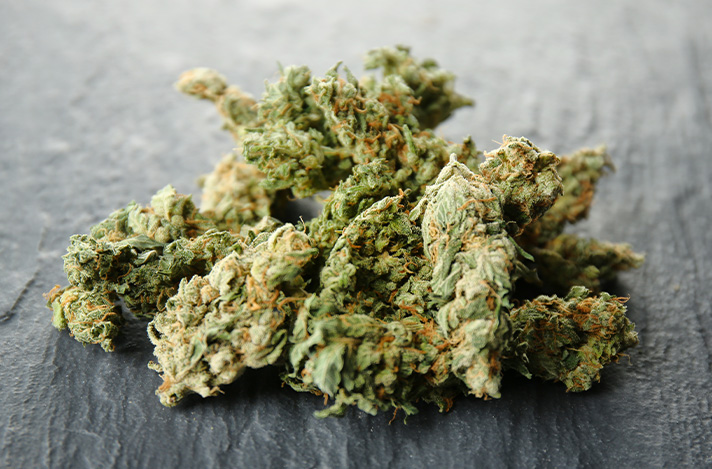
Most grocery shoppers are well-acquainted with squeezing avocados, knocking on cantaloupes, and sniffing herbs to determine quality. Fortunately, you can apply this sense of discrimination to determine if your weed is high-quality, too.
Your senses can tell you a lot about the bud in front of you, as can some directed research beforehand. In this article, let’s walk through the steps you can take at your local dispensary to determine good weed vs bad weed. Starting with research and ending with a squeeze, Boveda outlines its five-point, foolproof strategy for buying quality cannabis. All told these steps should only take a few minutes—and make you look like quite the cannabis connoisseur while you’re at it.
Research: Strains, Brands, and Designations
The steps on this list require you to use your senses. However, you could be in a pitch-black room with gloves on and a bad cold—and you’d still be able to get most of the way toward determining bad weed vs good weed. That’s because a little research goes a long way. First, look up well-regarded, high-quality weed strains. Some strains have benefited massively from years of selective breeding, morphing into genetic juggernauts that boast more desirable terpenoid and cannabinoid profiles. If you need a place to start, check out Leafly’s list of last year’s best-selling and highest-rated strains. (Spoiler: the Gelato family is still on top).
Don’t stop there. While genetics account for a lot, an individual grower still needs to nurture the plant, feed it thoughtfully, and cure it carefully—ideally, using Boveda humidity packs for weed. Their stamp on the final product is evident. Research reputable growers/brands in your region to determine who’s well-liked among cannabis aficionados. Though meandering at times, individual product threads on Reddit are typically helpful here. Do not rely solely on strain types or past product labels to determine potency; always check the label at the dispensary for that batch’s THC/CBD breakdown.
Finally, you can take stock of various designations: “small-batch,” “private reserve,” “craft,” “sun grown,” etc. Generally, these titles indicate higher quality bud.
First Impressions: The General Makeup
Depending on your Googling skills, that first step may take 5 or 10 minutes. This step, and the next three on the list, happen within mere moments—so brace yourself.
Presented with a bud, the first thing to notice is its general makeup, i.e., its ratio of stem to flower. Stems contain minimal cannabinoids and terpenoids yet must account for a portion of the overall weight of the product. Therefore, you want as little stem as possible.
Some bottom-shelf brands pass off products with far too much stem (inflating their profits by selling what’s typically considered manufacturing waste). At the same time, even top-shelf producers might let a bad batch slide due to human error. Unfortunately, it’s your due diligence to catch good weed vs bad weed on the consumer end.
Up Close and Personal: Vibrancy, Hairs, Trichomes, and Mold
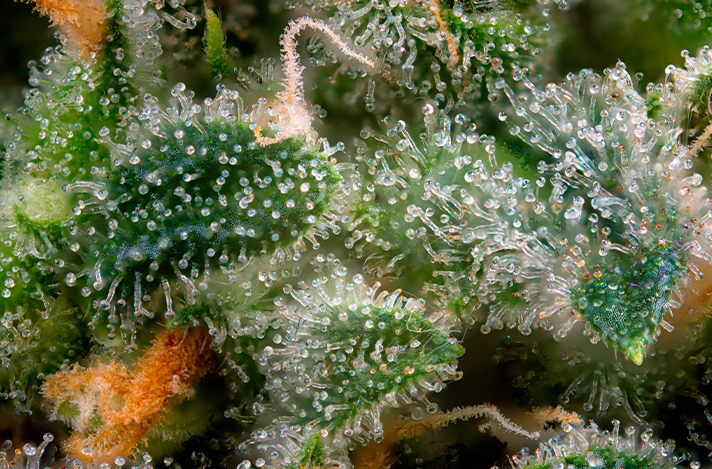
Next, get up close and personal with the cannabis if you can. You want to see weed nuggets showcasing vibrant greens, purples, oranges, etc. This vibrancy indicates a low exposure to environmental stressors like UV radiation, low humidity, and oxygenation. Consider the flower’s pistil stigmas—commonly called “hairs” in cannabis-speak. As this Royal Queen Seeds article details, deep orange pistils indicate that the bud was harvested at the right time when it was ripe and mature.
Zooming in even further (this may take some eye straining), inspect the trichomes, those “crystals” dusting the flower’s surface. The plant’s defense system, these minuscule opaque glands contain much of the weed’s terpenes—chemical compounds that give cannabis its special aromas, flavors, and potential health benefits. To preserve these trichomes after purchasing, your best bet is to pick up some Boveda humidity packs to prevent terps from evaporating.
Lastly, inspect the cannabis for mold. If the flower has been stored above the ideal humidity levels for cannabis, it may harbor mold spores that render the product hazardous and unsmokeable. Look for matte, gray-white powdery patches on the bud, discolored stems, or (in some extreme cases) slime. Unlike cannabis rich in trichomes, moldy cannabis features inconsistent blotches that lack that characteristic shimmer.
Passing the Sniff Test: Punch and Pungency
Now the fun part. If the budtender allows it, get your nose in there for a big whiff. But here’s the thing: a strong smell is an indicator that terpenes are evaporating. If the bud you’re looking to buy is packed with Boveda, you can be sure you’re getting the full flavor, potency, and experience intended by the cultivator, but your bud won’t smell as strongly until you’re ready to grind it and enjoy.
Either way, the quality will shine through with big, punchy, pungent aromas. A diesel engine, a pine forest, a cabinet full of spices, a lemonade spritz—the good stuff!
If the product smells muted, chances are it’s either dried out or low quality. And if it smells musty, you might be dealing with latent mold issues. Separately, notes of freshly cut grass or ammonia indicate under-cured or outright uncured weed.
Pressing Matters: Squeezing for Hydration
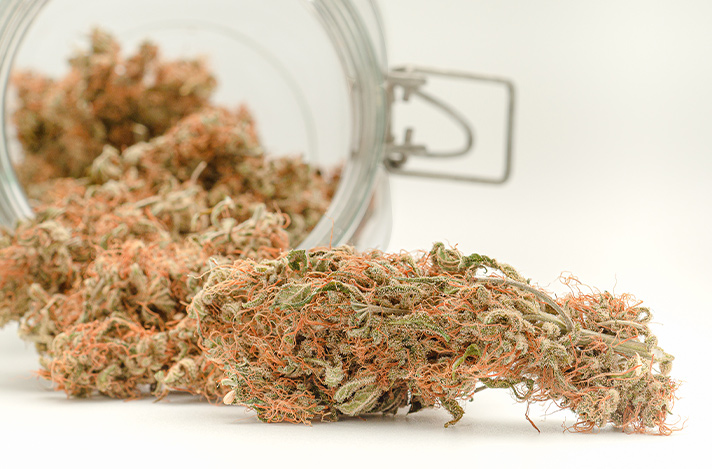
Finally, onto pressing matters. Given strict rules around handling at dispensaries, you might have to settle for a gentle squeeze within the baggie. That’s okay. Even through a durable bag, you should get all the information you need.
Ideally, the bud should have a little give. If it cracks and crumbles with slight pressure, it’s too dry. You can revive it for a smoother smoke with a Boveda 2-way humidity control pack—but once the trichomes are toast and the terpenes have evaporated, they’re gone, resulting in reduced potency. Conversely, bud that feels spongy or soft has been over-hydrated, one of the main moldy weed symptoms to avoid.
If, by some stroke of luck, you can touch the product without a bag between your fingers and the flower, you should also feel for stickiness. Sticky weed is resinous—a quality that signifies high trichome concentration and indicates an abundance of cannabinoids and terpenes. In other words, high-quality weed.
If these steps seem like a lot of inspection, remember that the process takes roughly 30 seconds—a full minute if you’re new to it. And like searching for the right melon at the grocery store, your efforts will net you a more flavorful take-home product.
Once home, don’t forget to store your stash correctly in a tightly sealed container with minimal UV exposure and a Boveda 2-way humidity control pack.

